At a critical juncture when the market most needed liquidity support, several centralized exchanges, including Binance, collectively experienced disruptions: outages, order book lags, and account freezes occurred in succession. Some suspect that Binance’s unified margin system was subjected to a ‘targeted attack’—the world’s third-largest stablecoin plummeted off its peg, causing collateral values to collapse instantly, directly triggering a chain reaction of forced liquidations.
This Friday, a post by U.S. President Trump on social media regarding tariff threats acted like a bombshell, triggering a brutal ‘washout’ in the cryptocurrency market.
The price of Bitcoin sharply retreated from its historical high of over $126,000 on Friday, once falling below the $110,000 mark, with a daily drop of 13.5%. Ether fell over 17%, while Ripple and Dogecoin plummeted more than 30%.
 The total market capitalization of the cryptocurrency market evaporated by nearly $800 billion within hours. According to statistics, the total liquidation of leveraged positions across the network exceeded $20 billion, described by industry insiders as ‘the largest liquidation event in cryptocurrency history.’
The total market capitalization of the cryptocurrency market evaporated by nearly $800 billion within hours. According to statistics, the total liquidation of leveraged positions across the network exceeded $20 billion, described by industry insiders as ‘the largest liquidation event in cryptocurrency history.’
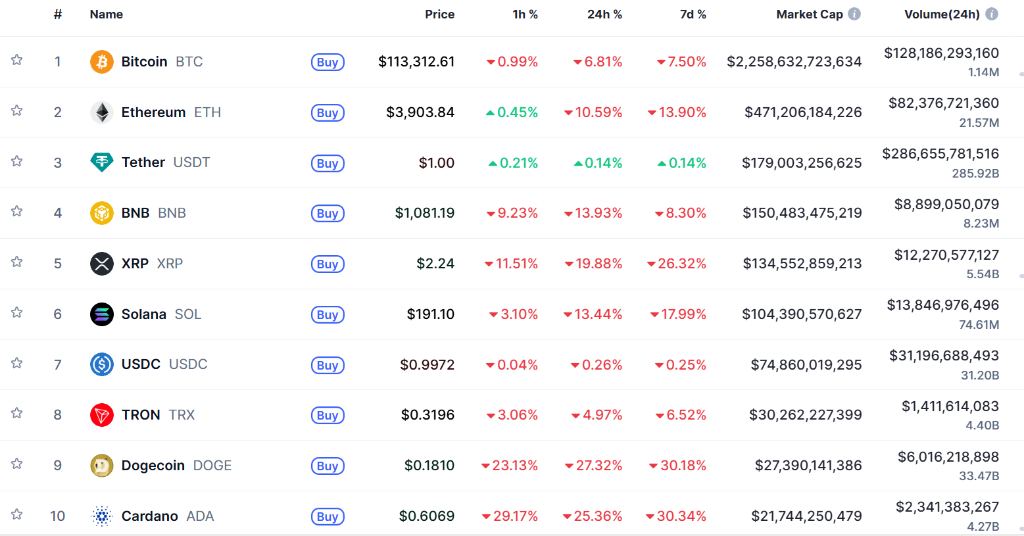
When the market was most in need of liquidity, some centralized exchanges (CEXs) faltered. During the peak of liquidations, system delays and trading interruptions occurred on exchanges like Binance, with numerous users reporting an inability to execute orders or manage their positions, exacerbating losses.
Social media was flooded with anger toward Binance, accusing it of ‘pulling the plug’ at a critical moment. This incident not only exposed the technical bottlenecks of centralized exchanges under extreme market conditions but also reignited debates about the resilience of centralized versus decentralized finance (DeFi).
Meanwhile, some viewpoints directly pointed out that this plunge was not a simple market behavior but rather a ‘targeted attack’ exploiting vulnerabilities in Binance’s system, triggered by specific asset de-pegging.
A ‘chain-linked shipwreck’-style liquidation.
According to a widely circulated post on Binance Square, this collapse did not occur without warning but instead slowly brewed in a highly leveraged market environment.
The post pointed out that, first, the market had long been a ‘ticking time bomb,’ characterized by widespread use of high leverage by traders, dangerously high levels of open interest, and the dilution of liquidity due to the listing of a large number of low-quality tokens.
Trump’s tariff threat became the ‘external spark’ that ignited everything. Traditional markets reacted first, followed closely by Bitcoin and Ethereum, while the already fragile altcoins collapsed instantly.
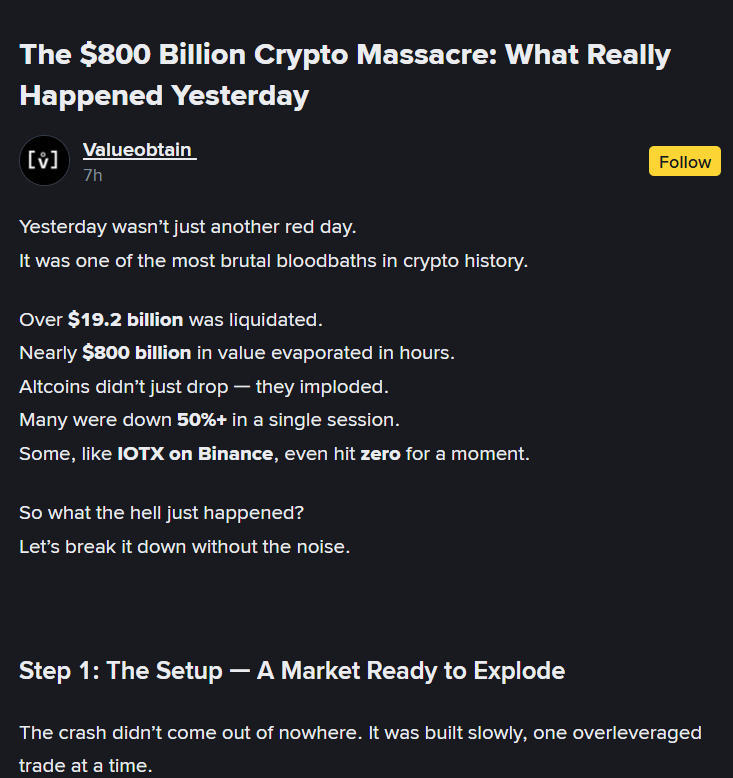
Next was the ‘triggering’ of a chain reaction. The cryptocurrency market operates on leverage, and when prices fell below key support levels, exchanges’ automatic liquidation mechanisms began to activate. This was not an emotional sell-off but rather a program automatically executed by exchanges to protect their loans.
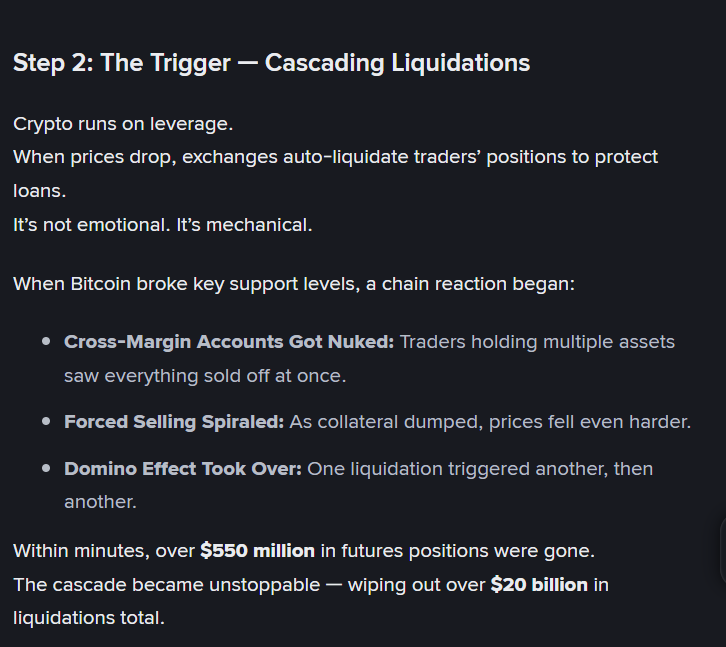
The post described in detail the specific mechanics of the liquidation chain reaction:
First and foremost, accounts using cross-margining were subject to full forced liquidation due to declines in some asset prices, with their collateral being forcibly sold by the system;Subsequently, the forced sale of collateral further depressed prices, creating a waterfall effect where ‘one liquidation triggers another.’
Data showed that within minutes, more than $550 million worth of futures positions disappeared, eventually resulting in a catastrophic liquidation exceeding $20 billion in total.
Outage Controversy: Centralized Exchanges Face Trust Crisis
At a time when the market most needed liquidity and stability, the performance of some centralized cryptocurrency exchanges (CEXs) was less than satisfactory.
According to Cryptopolitan, multiple centralized exchanges encountered severe system congestion during the liquidation period, causing application freezes, order book delays, and even account lockouts for some users who were unable to take any actions amid significant market volatility.
Apart from Binance, platforms such as Coinbase and Robinhood also reported similar issues.
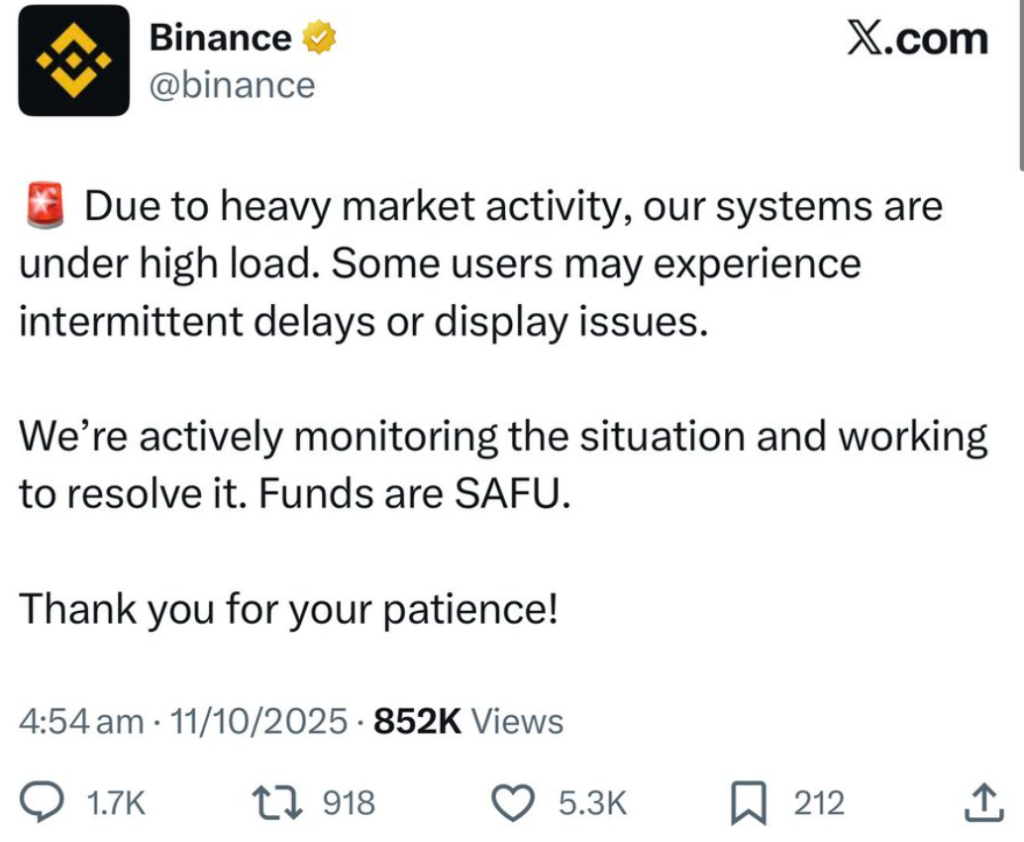
In sharp contrast, decentralized finance (DeFi) platforms smoothly passed this stress test. It was reported that decentralized exchanges (DEXs) like Uniswap and Aave experienced no technical issues or service interruptions during the market turbulence.
Among them, the Aave platform flawlessly processed $180 million in liquidations without human intervention, while Uniswap handled nearly $9 billion in trading volume. This performance gap has once again put the trust in centralized platforms under scrutiny.
‘Targeted attack’ or systemic flaw? Severe de-pegging of the world’s third-largest stablecoin
As more details emerged, a theory suggesting that this crash was a ‘targeted attack’ on Binance began to gain traction.
Forgiven, an executive at Conflux Network, posted on social media stating that this incident might have been a coordinated attack targeting Binance’s Unified Margin system, which allows traders to use various assets as collateral.
However, this flexibility turned into a channel for risk transmission during extreme market volatility. As the pegged assets used as collateral—USDe, BNSOL, and WBETH—de-pegged, the value of the collateral collapsed, triggering large-scale forced liquidations.
Forgiven pointed out that attackers may have exploited this vulnerability to aggressively depress the prices of specific assets such as USDe, BNSOL, and WBETH on Binance, causing severe depegging. Data shows that USDe, the world’s third-largest stablecoin, temporarily dropped to $0.65 on Binance, while its price on other platforms remained at $0.90 during the same period.
Forgiven believes that the extreme declines of multiple alternative tokens exclusively on Binance are signs that the hedging portfolios of major market makers have been breached.
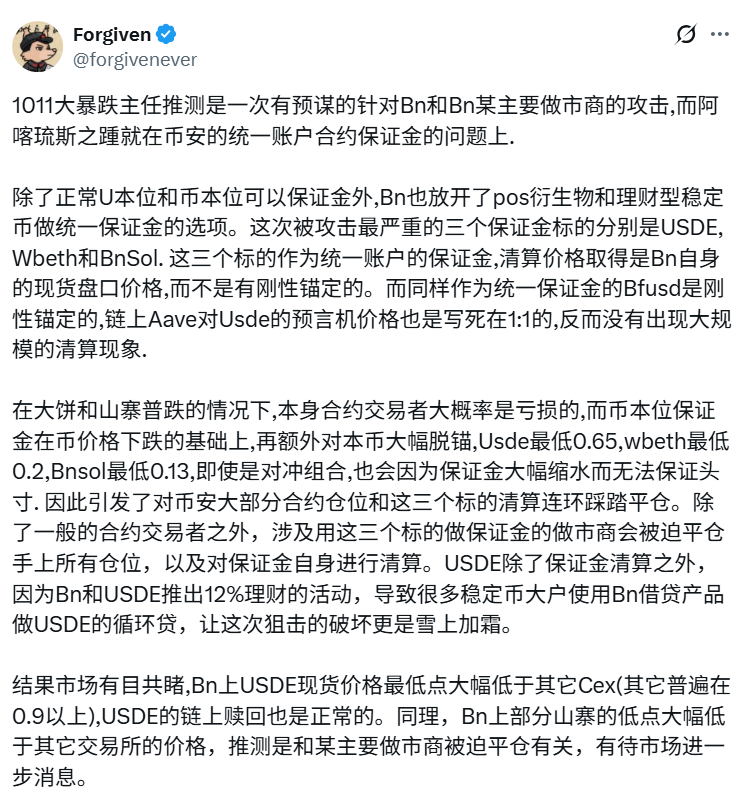
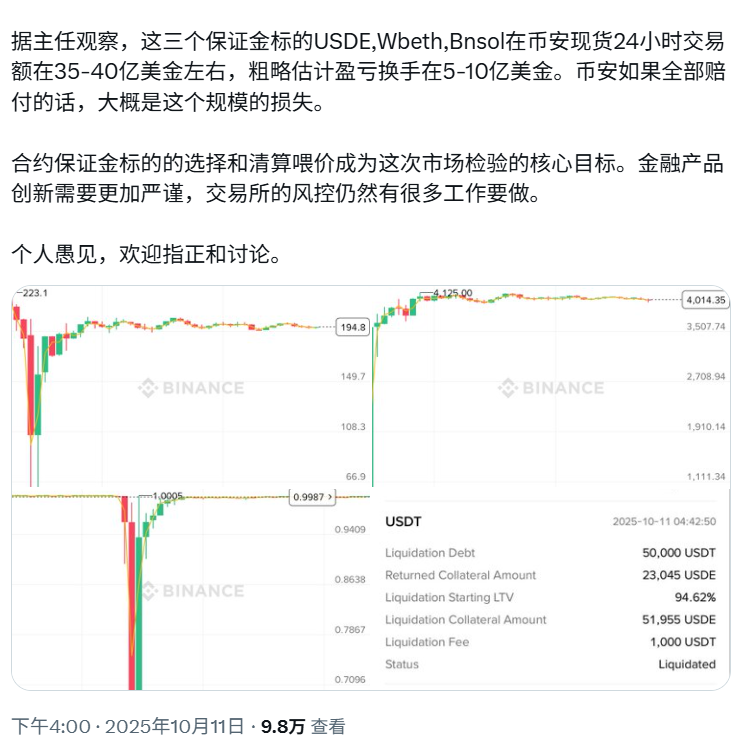
Binance becomes the main target of criticism
Regardless of the underlying reasons, as the world’s largest exchange, Binance has become the focal point of user criticism amid this turmoil.
A large number of users reported issues such as account freezes and malfunctioning stop-loss orders during the market crash. Even more seriously, tokens like Enjin (ENJ) and Cosmos (ATOM) experienced “flash crashes” on Binance, with their prices momentarily dropping to zero before quickly rebounding. This sparked accusations of market manipulation, with users alleging that the platform profited from the chaos.
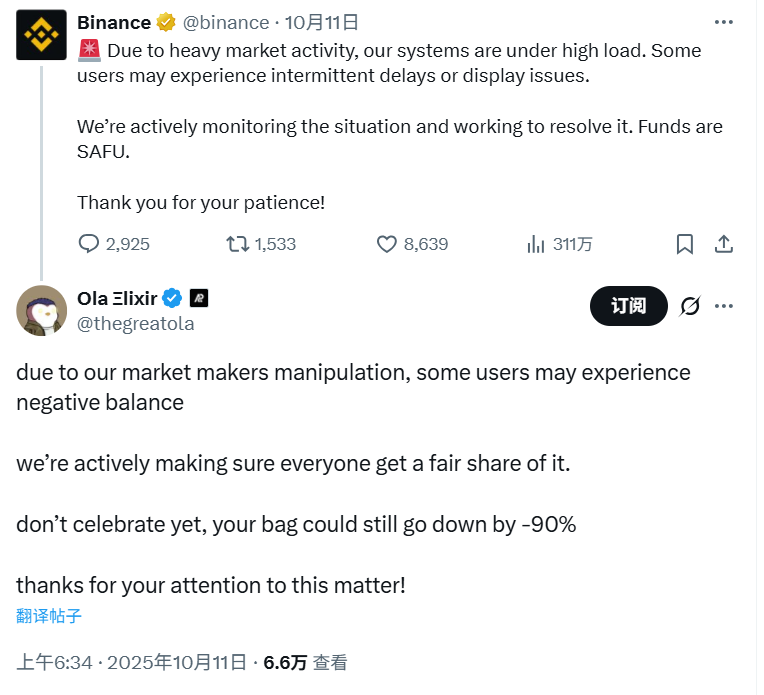
In response, Binance acknowledged that “intense market activity” had caused system delays and display issues, assuring users that “funds are safe (SAFU).” Binance has stated that its systems have now been restored.
However, this has not quelled the community’s anger. Critics are calling for regulatory authorities to investigate, and this is not the first time Binance has faced allegations over similar incidents.

Image: Social media is flooded with user complaints expressing dissatisfaction with Binance.
Ultimately, this leverage-driven collapse, though harsh, has cleared excessive risks accumulated in the market. As history has repeatedly shown, the deleveraging process is part of the market cycle and will continue to be in the future.
However, this time, risk management issues at centralized exchanges and decentralized exchanges will remain a focal point.
